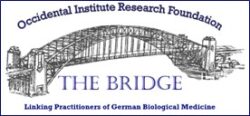Cancer, Autoimmune Disease and Vitamin D
Vitamin D is not a true vitamin. Vitamin D is actually a steroid hormone. Vitamin D hormone deficiency is a worldwide problem. The most well known vitamin D deficiencies are rickets and osteomalacia from defective bone development. We need vitamin D to absorb calcium and build strong bones.
Over the last ten years, the latest medical science indicates Vitamin D deficiency has also been associated with an increased incidence of cancer, autoimmune diseases such as multiple sclerosis, and rheumatoid arthritis, inflammatory bowel disease, and type I diabetes. It is also associated with hypertension, chronic pain, obesity, Influenza flu, tuberculosis, heart disease and accelerated aging.
Vitamin D deficiency has even been associated with autism. A child recovered from autism with a high dose (5000 U/day) Vitamin D regimen. The child had a mutated vitamin D receptor. (John Cannell, MD, from the Vitamin D Council, 2008).
Most people understand we need sunlight with ultra violet radiation (photons) to convert cholesterol in the skin to synthesize vitamin D3 (Cholecalciferol). Four UVB photons combine with one molecule of cholesterol to make vitamin D3. However, Vitamin D3 is not a biologically active hormone. It is a pre-hormone. It needs to be converted to 25 hydroxy vitamin D3 in the liver and finally converted to biologically active 1,25 dihydroxy vitamin D3 in the kidneys.
For the last 50 years, there have been strong recommendations to avoid sun exposure and increase the use of sun block lotions to prevent skin cancer and damaging the skin. It became medical heresy to recommend sun tanning in any form. During that time period, there’s been a dramatic increase in the incidence of every form of chronic illness from cancer to autoimmune diseases, as mentioned above. These are like new modern plagues. The medical scientific community has been looking at the DNA and a genetic basis as the cause of the new modern plagues but are we missing something as simple as sun light?
The 1903 Nobel Prize for Medicine was given to Niels Ryberg Finsen in recognition of his contribution to the treatment of tuberculosis, lupus and erythematosis with UV light radiation. With his discovery, he opened a new avenue for medical science and the development of sun spas in Europe. In 1919, Huldschinsky cured childhood rickets with sun light.
Is there a “power of darkness” promoting deceitful information about the danger of natural sun light? Fortunately, there is overwhelming evidence pointing to the sun’s UV radiation in moderation as possibly one of the most cost effective ways to prevent these modern plagues of chronic illness. After all, sun light is free!
Why does vitamin D hormone therapy influence so many different aspects of medical problems? Among its many roles, vitamin D modulates DNA at the cellular level. It strengthens the innate immune system by producing antimicrobial peptides (LL-37), also called “Cathelicidin”, to combat infections and heal wounds. Vitamin D3 induces cathelicidin to kill tubercle bacilli and fight Influenza viral infections.
Why is flu season in the winter time? Why do you feel sadder or easily depressed when the weather is cold and gloomy during December through February? You don’t need a Ph.D. in science or a medical degree to figure that out. Fifty-seven percent of hospitalized patients are deficient in vitamin D according to a major medical journal (Holick, Mayo Clinic Proc.2006).
I’ve been measuring vitamin D by measuring the level of 25-hydroxy vitamin D3. Most people are very low or low normal on a scale of 20-100 ng/ml reference range. The optimal level should be 50-65. For cancer patients, this should be elevated to the range of 65-90. Most people can take 2000 to 3000 U of vitamin D3 without concern for side effects. It is a good idea to check your level three months after starting vitamin D supplements.
Cancers strongly sensitive to vitamin D include: breast, colon, prostate, lymphoma, bladder, ovarian, endometrial, gallbladder, stomach, pancreatic, kidney and rectal. Moderate vitamin D sensitive cancers include: leukemia, lung, melanoma, multiple myeloma, small intestine, vulvar and thyroid.
The liver and kidneys play very important roles in converting vitamin D3 to the biologically active 1,25 dihydroxy vitamin D3. These organs are very susceptible to heavy metal toxicity and environmental chemical exposures. Total body detoxification with specific liver and kidney cleansing programs is an imperative step for prevention and healing for whatever ails you.
Get sunlight but don’t get sunburn. We cannot get adequate amounts of vitamin D from foods alone. Most adults need to take at least 2000-3000 U of vitamin D3. If you’re under a doctor’s supervision, measure your vitamin D level. Not all vitamin D is the same. Some are synthetic vitamin D. Avoid prescribed synthetic vitamin D given in 50,000 U pill. It is not a natural vitamin D3 but a vitamin D2 called ergocalciferol. Sunshine is natural, free, and the absence of darkness: our ray of hope.
This article draws material from lectures by the following: Coleen Hayes, Ph.D. on “Sunlight, Vitamin D and Autoimmune Disease”, Cynthia Browne, MD on “The role of vitamin D in carcinogenesis”, Joseph Mercola, D.O. on “How sunshine reduces cancer by 50 %” and www.VitaminDCouncil.org.
 An Exclusive Article for Members
An Exclusive Article for Members
From THE BRIDGE Newsletter of OIRF
Published February 2009
© Copyright 2009, Dr. Simon Yu, MO, USA



